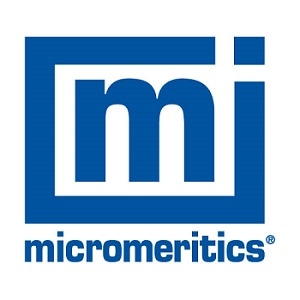Particle size analysis is an effective tool having myriad applications in almost all industries. There are a variety of automated techniques available to measure particle size distribution.
Particle size is typically reported in units of equivalent spherical diameter owing to the ambiguity of defining the diameter of non-spherical particles and limitations intrinsic in the instrument detection system.
Particle size distributions of non-spherical particles reported in equivalent spherical diameter differ between different measurement techniques for a number of reasons. The selection of an appropriate particle sizing technique for a specific sample or application is based on:
- Understanding what each technique actually quantifies
- How each technique carries out the measurement
- How each technique converts the measured value into equivalent spherical diameters
This article discusses the analysis of samples of garnet, wollastonite, and glass beads using different analytical techniques, including dynamic image analysis, X-ray sedimentation, electrical sensing zone (Coulter Principle), and static laser light scattering, in order to demonstrate the effect of particle shape on particle size measurement.
Dynamic Image Analysis
In dynamic image analysis, images of particles are acquired while they are passing through the detection zone. Many different shape parameters are employed to analyze linear dimensions of the cross-sectional shape for each image. This technique reports the particle size in terms of these linear dimensions.
X-Ray Sedimentation
X-ray Sedimentation determines particle size by determining the terminal velocities of particles that settle in a fluid medium. This method reports the particle size in terms of the diameter of a sphere of the same material settling at the same terminal velocity as the particle of interest in the same fluid and under the effect of the same force.
Electrical Sensing Zone
In the electrical sensing zone technique, particles dispersed in an electrolyte and drawn through an orifice concurrent with an electric current produce a change in impedance that is proportional to the volume of the particle traversing the orifice. The change originates from the displacement of electrolyte by the particle and creates an electrical signal.
Measurement of the signal determines the electrolyte volume displaced by the particle and therefore the particle volume. This technique reports the particle size in terms of the diameter of a sphere displacing the same amount of electrolyte as the non-conducting particle.
Laser Light Scattering
The laser light scattering technique is based on the assumption that light is scattered by spherical particles of different size in patterns of intensity as a function of scattering angle. These scattering patterns are specific to the particle diameter, and are cumulative with respect to particles of different size.
This technique reports particle sizes in terms of the diameters of spheres in a group of spherical particles producing the same, or virtually the same, scattering pattern as that determined by the instrument.
Analytical Technique Properties
The following table summarizes the analytical techniques, basic measurement performed by the techniques, particle variables that are affecting the measurement, and the corresponding Micromeritics analyzers that were employed to collect the data to demonstrate the effect of particle shape on particle size measurement.
| Analytical Technique |
Basic Measurement |
Particle Variables Affecting Measurement |
Micromeritics Analyzer |
| Laser light scattering |
Light intensity versus scattering angle |
Refractive index, shape, orientation |
Saturn® DigiSizer II |
| Electrical sensing zone |
Change in electrical signal across a conducting orifice |
Porosity, conductivity |
Elzone® II |
| Sedimentation |
Settling velocity |
Density, shape |
SediGraph® III |
| Dynamic image analysis |
Linear dimensions of projected cross-section of particle |
Particle orientation |
Particle Insight |
Experimental Results
Garnet Crystals
Garnet crystals have approximately cubic shapes. When compared to a sphere of the same volume, a cube has a roughly 30% longer diagonal. As a result, techniques that consider orientation such as dynamic image analysis and laser light scattering report larger particle size (Figure 1).
.jpg)
Figure 1. Test results for garnet crystals
Wollastonite Particles
Wollastonite has rod-shaped particles. Since particle orientation can drastically affect the apparent dimensions of rod-shaped particles, detection techniques that take particle orientation into account yield broader peaks and larger particle size measurements (Figure 2).
.jpg)
Figure 2. Test results for wollastonite particles
Glass Spheres
As anticipated, the most consistent results were obtained for glass spheres for the different techniques. The particle orientation does not affect the particle size measurement for glass spheres as they are spherical in shape.
Microscopy of the sample revealed the presence of air bubbles of different sizes in some of the glass spheres, lowering their density to some extent. As a result, some of the spheres are detected as undersized by the SediGraph, thus widening the distribution and shifting it to a somewhat finer size (Figure 3).
.jpg)
Figure 3. Test results for glass spheres

This information has been sourced, reviewed and adapted from materials provided by Micromeritics Instrument Corporation.
For more information on this source, please visit Micromeritics Instrument Corporation